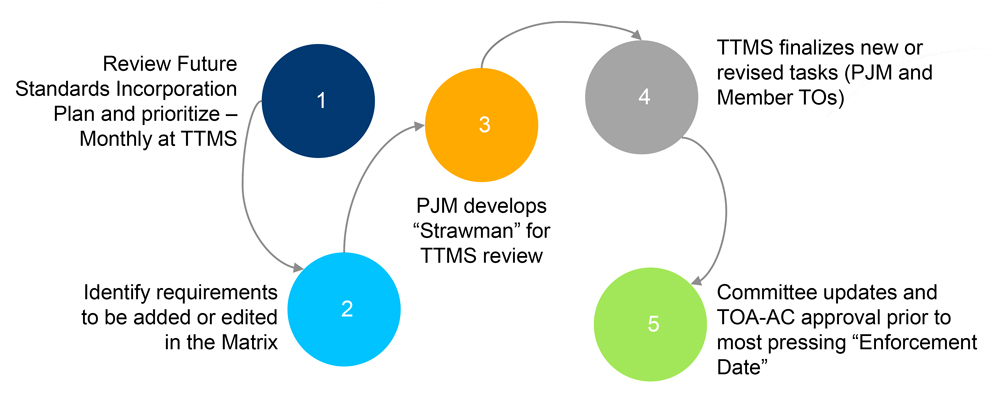Illinois CEJA Reliability Guidance Update
PJM last week provided the Operating Committee an update on the Illinois Climate and Equitable Jobs Act (CEJA) and its impact on the RTO.
Chris Pilong, director of PJM’s operations planning department, presented a draft reliability guidance document that the RTO will send to Illinois regarding the new clean energy legislation. Signed into law on Sept. 15 by Gov. J.B. Pritzker, the legislation requires all investor-owned baseload coal-fired power plants and remaining oil peaker turbines to shut down by 2030. (See Illinois Senate Passes Landmark Energy Transition Act.)
Gas turbine plants, including ones currently under construction, must also close by 2045 under the terms of the bill, although the state has the option to retain plants that are critically needed.
Pilong said PJM has been working with the Illinois Environmental Protection Agency and the governor’s office to develop a guidance document to clarify the legislation for generation owners and other impacted stakeholders. The law’s broad scope and impact creates a need for generation owners and state entities to discuss and resolve issues, he said.
“This guidance document is very much written from the PJM and member stakeholder perspective,” Pilong said.
PJM received feedback from stakeholders on the RTO’s procedures for excepted generators in Illinois. In a section of the document on scheduling large greenhouse gas-emitting units for reliability, PJM is proposing language that says a unit will need to bid into the day-ahead and real-time markets as “unavailable” if it does not have any remaining run hours left as a result of the CEJA legislation.
Pilong said a unit will also need to enter an “unplanned” outage ticket with a cause code of “emissions – CEJA” in the PJM eDART system. He said a unit entered with this outage type and cause code will not be expected to enter Generating Availability Data System outages and will not have an equivalent forced outage rate demand impact calculated.
“What we found is the legislation creates a new scenario for us,” Pilong said. “We’ve never had a unit that’s available for a reliability need but not available for potential economic scheduling.”
Marji Philips, LS Power vice president of wholesale market policy, praised the work being done by PJM staff to draft the guidance document. Philips said one of her company’s biggest concerns is to have the Illinois government put in writing that generators will not be penalized for running as reliability resources and be protected from private lawsuits for exceeding emissions limits.
“We don’t want to get into litigation,” Philips said.
Philips also encouraged PJM to complete impact studies from the legislation as soon as possible. She said other states are currently looking at similar legislation, and there are “significant reliability concerns” with the deactivation of generators.
“It would be helpful to give some guidance to other states that are looking at similar legislation and some of the issues they can expect to possibly occur,” Philips said.
TO/TOP Matrix Review Approved
Stakeholders unanimously voted to recommend that the Transmission Owners Agreement – Administrative Committee (TOA-AC) approve the latest version of the Transmission Owner/Transmission Operator (TO/TOP) Matrix.
Gizella Mali, chair of the PJM TO/TOP Matrix Subcommittee (TTMS), reviewed version 16 of the TO/TOP Matrix. Mali said the subcommittee has been working on changes since June and finalized the matrix in November.

The TO/TOP Matrix is an index between the PJM manuals and governing documents and NERC reliability standards applicable to the RTO as the TOP. The matrix delineates the assigned and shared tasks for member TOs where PJM relies on its TOs to perform certain tasks.
Changes in version 16 of the matrix included several revised tasks with updated language and administrative changes to update reference documents, spelling and grammar and align abbreviations. Mali said there were no changes with new NERC reliability standards or other standards in the existing matrix.
Members also unanimously recommended approval of the matrix in a vote at last week’s Planning Committee meeting. The matrix will now go to the TOA-AC for final approval at the March meeting.
Manual 40 Endorsed
Members unanimously endorsed a minor change to Manual 40 as part of the periodic review.
Benjamin Miller, PJM’s senior training technology coordinator, reviewed the change to Manual 40: Training and Certification Requirements. Miller said Maureen Curley was added as manager of PJM’s state and member training department. Curley replaced Michael Sitarchyk who retired as manager earlier this year.
The manual change will now go to the Feb. 24 Markets and Reliability Committee meeting for final endorsement.
Manual First Reads
Several manual changes resulting from the periodic review were presented for first reads by Donnie Bielak, manager of reliability engineering for PJM. The manuals were:
- Manual 12: Balancing Operations with a review of the language that included changes to attachment references and other minor revisions.
- Manual 13: Emergency Operations with a review of the language that added columns with winter values for estimated peak load and estimated load reduction in the voltage reduction summary table.
- Manual 37: Reliability Coordination with a review of the language that corrected Silver Run Electric to properly show as a transmission owner in Attachment A of the manual.
Stakeholders will vote on the changes at the March OC meeting.
